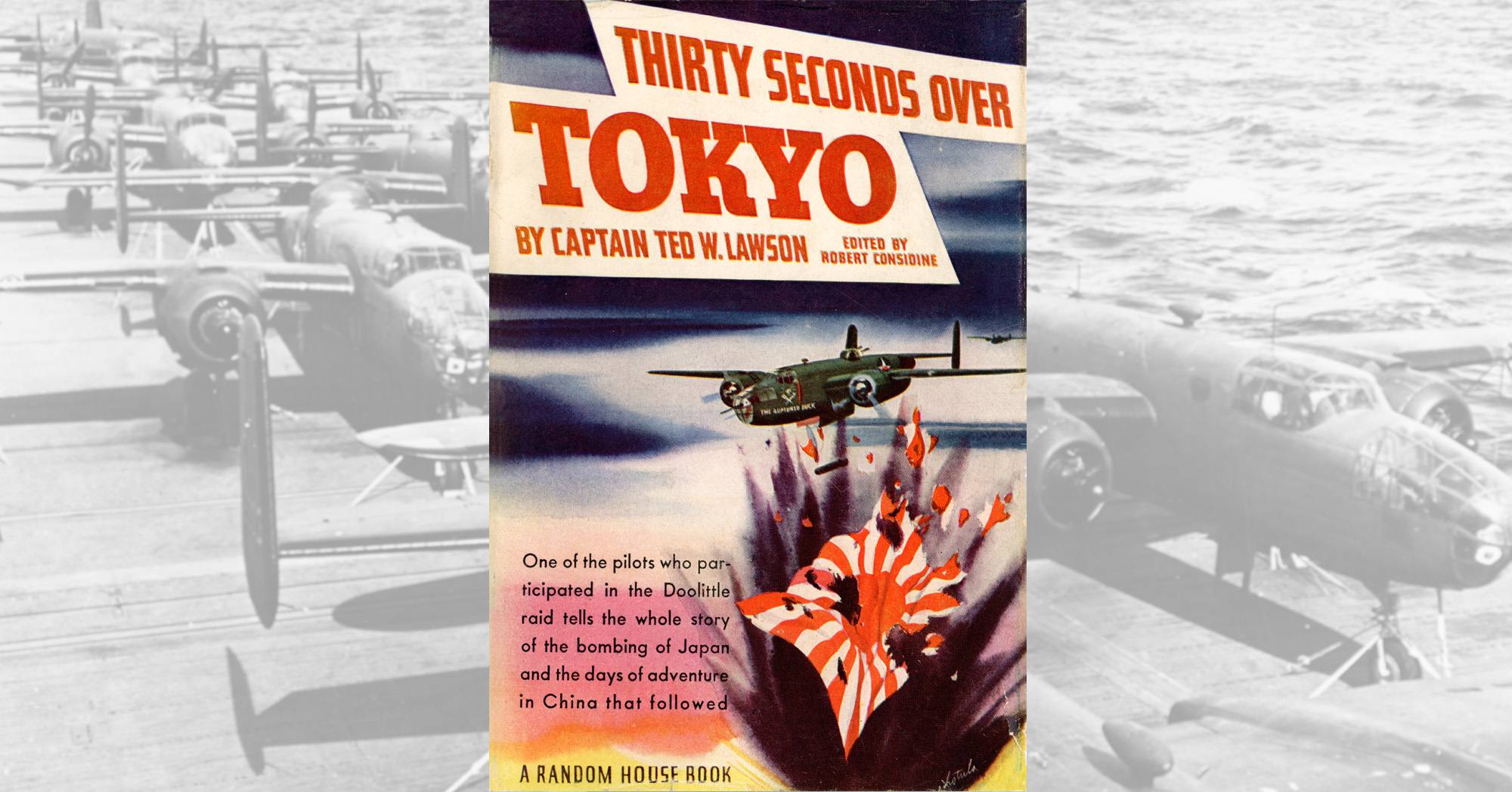Thirty Seconds Over Tokyo by Captain Ted W. Lawson, edited by Robert Considine
On April 18, 1942, Americans got some very welcome news: 16 North American B-25 Mitchell medium bombers had raided Tokyo and four other major Japanese cities in retaliation for the attack on Hawaii the previous December. Led by racing pilot Lt. Col. Jimmy Doolittle, the mission was launched from an aircraft carrier, just as the Japanese had done at Pearl Harbor.
The crews of 15 of the B-25s were forced to bail out or ditch their planes off the Chinese coast at night during stormy weather, after they were unable to locate their landing fields. Three men died, and eight others were captured by the Japanese. Of those, three were executed as war criminals and one died in prison of malnutrition; the remaining four were released in August 1945. Five men in the 16th plane, low on fuel after the raid, were interned after they landed safely in Russia.
Captain Ted Lawson, a pilot, and three other members of his five-man crew were seriously injured when they were forced to ditch their bomber off the Chinese coast. Sergeant David J. Thatcher, the flight engineer, gave them all first aid and helped them evade capture. They were joined by members of another crew that included Captain Thomas R. White, a physician, who had volunteered to go along on the mission as a gunner. White amputated Lawson’s leg, then transfused some of his own blood to save the pilot’s life. Thatcher and White would later receive the Silver Star for their actions.
While Lawson was convalescing in the fall of 1942, he collaborated with reporter Bob Considine to tell his story, beginning at the point when he volunteered to participate in the secret mission. Together they chronicled what he recalled of the crash and its harrowing aftermath.
Considine soon obtained a book contract for Thirty Seconds Over Tokyo, but the manuscript was prohibited for release by the War Department until April 1943. As the only firsthand account by a Doolittle Raider, not to mention a source of previously classified details about the daring raid, it became an immediate bestseller. A film based on the account, starring Spencer Tracy and released the following year, was also widely acclaimed, though the movie version is not entirely accurate. In 2002, 10 years after Ted Lawson died, his book was reprinted with additional photos and an introduction by his wife Ellen.
Only eight Doolittle Raiders of the original 80 survive today. Dave Thatcher of Missoula, Mon., who was 20 at the time of the raid, is one of them. The Raiders held their 68th reunion at the National Museum of the U.S. Air Force April 16-18.
Originally published in the July 2010 issue of Aviation History. To subscribe, click here.





